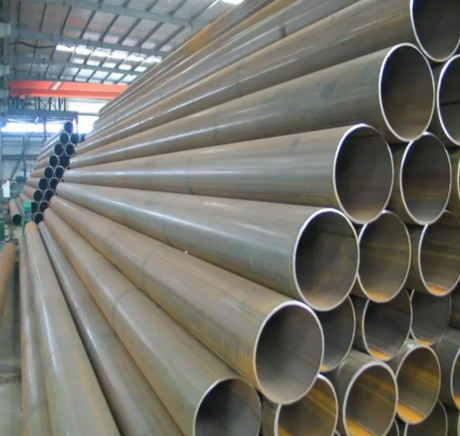Steel pipe welding is a commonly used process in construction, machinery manufacturing, oil, natural gas, hydropower, chemical and other industries, but the quality of
welded steel pipes directly affects the safety and service life of the project. Therefore, the quality of steel pipe welding must undergo strict acceptance. Below,
Carbon steel pipe manufacturer will introduce to you in detail the acceptance standards and acceptance methods of welded pipes.
1. Acceptance criteria for welded pipes
(1) Weld seam forming
The weld seam should be uniform and continuous, without gaps and black slag inclusions. Both sides of the weld should be straight and smooth, without obvious unevenness, inclusions, subsurface cracks and other defects.
(2) Weld appearance
Welded steel pipes should ensure complete weld penetration, and there should be no missing welds, weak welds, local poor fusion, etc.

(3) Dimensional deviation
When inspecting welded steel pipes, it should be noted that basic deviations such as pipe diameter, wall thickness, tolerances, and curvature should comply with the requirements of engineering specifications.
(4) Chemical composition
Conduct chemical composition analysis and testing, and the steel pipe weld material should comply with the chemical composition specifications of the steel.
(5) Mechanical properties
The mechanical properties of welded steel pipes should meet the requirements of national or industry standards. Steel pipe welds should be tested for tensile strength, bending strength and hardness values and the results should be checked.
2. Acceptance method of welded pipes
(1) Appearance inspection
Conduct a comprehensive observation and inspection of the weld structure to see whether the direction and size of the weld meet the requirements of the engineering specifications. If there are irregular welds, sandblasting, chemical cleaning and other methods can be used to remove the welds.
(2)
Non-destructive testing
Non-destructive testing refers to the use of heat, sound, light, electricity, magnetism and other methods to inspect the interior of mechanical materials without damaging or affecting the performance of the object being tested. Does not damage the internal organization of the object being measured. and other reaction changes, using physical or chemical methods as a means, with the help of modern technology and equipment, to analyze the structure and state of the interior and surface of the specimen, as well as its type, quantity, shape, nature, location, size, distribution and changes of defects. Methods for conducting inspections and tests. High-precision non-destructive testing technologies such as ultrasonic testing, X-ray testing or magnetic particle testing are used to detect possible defects in the welds. Once discovered, it needs to be corrected promptly.
(3) Mechanical parameter detection
Standardized testing equipment is used to measure the mechanical properties of electric welded steel pipes from multiple angles to determine whether they meet engineering requirements and standards. Commonly used mechanical property indicators include: strength, plasticity, hardness, impact toughness, fatigue strength, etc.
Go here to learn more about "seamless vs welded pipe"


